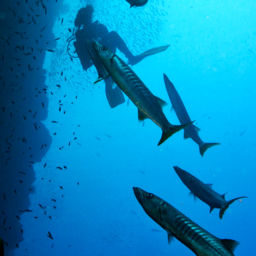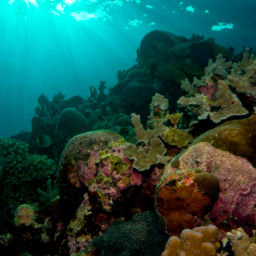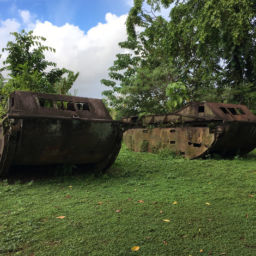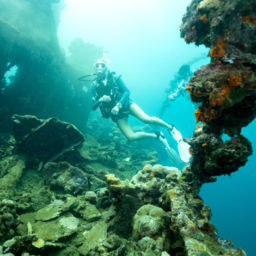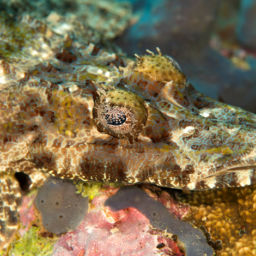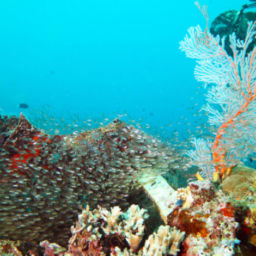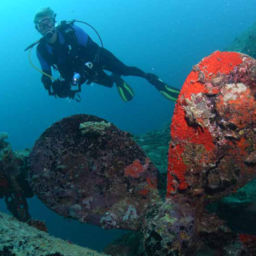The island of Munda, in the Solomon Islands’ Western Province, offers a diverse range of sites, all easily accessible via a 10– to 40–minute boat ride across an idyllic turquoise lagoon from the small town’s only dive shop, Dive Munda. One of the most memorable dives in this region, however, is the Cave of the Kastom Shark.
There’s a story or — rather — legend behind the name, one with several variants. One tells that every village has a shark that protects it and they all live in this ‘Cave of the Kastom Shark.’
Another legend tells of a young man dragged beneath the reef by a shark trying to steal the turtle he’d caught. The shark swims deep into a dark tunnel. Reaching the end of his lung capacity, the boy sees a light above him and releases the turtle to swim to the surface, finding himself in a small pool in the jungle. The boy’s family eventually finds him, sitting bewildered in the trees and telling of his incredible adventure.
Diving the Cave of the Kastom Shark
Our adventure starts where the legendary turtle-fishing boy’s adventure ends — in the trees. I disembark the dive tender and follow my guide onto a small island, across coral rubble through a short patch of mangroves to the rocky mouth of the cave. From a seated entry into a pool just 6.5 feet (2 m) wide, I plunge into the vertical shaft to 55 feet (17 m), making my way single file behind other divers along the dark, narrow passages to a maximum depth of 115 feet (35 m).
The beam of my torch reveals that this cave is almost entirely devoid of life. Above me, ancient stalactites and dark rock formations on the walls surround me, each with a light dusting of silt. The cave consists of three chambers connected by a thin tunnel. The smallest opening is between the second and third chamber, just 5 feet (1.5 m) wide and at a sharp angle. The cave is large enough to be comfortable and there is a guideline along the left-hand wall for easier navigation.
We pass lobsters hiding under rock ledges, rather surprised-looking cardinalfish, squirrelfish, and soldierfish as we approach the blue of the ocean opening.
Emerging through the cave’s last chamber from darkness into clear, blue water, another of Munda’s spectacular coral walls greets us. Giant gorgonian fans frame the entrance to the cave, silhouetted against the blue, with soft corals forming a colorful backdrop to whip corals, sponges and larger hard-coral formations.
When we swim out onto the reef, I immediately wish I was back in the cave, discovering it for the first time. As majestic as the giant sea fans were, they don’t have quite the impact of the dark beginning to my dive.
The vertical wall is teeming with life, with clouds of bright orange and purple basselets flitting around the coral outcrops. Large schools of fusiliers speed up and down the wall. In the blue, sharks swim past, along with the occasional eagle ray and turtle. If I hadn’t just emerged from a subterranean adventure, this spectacular scene would be even more so.
Who found the cave?
The Cave of the Kastom Shark was discovered by Munda diving pioneers Dave and Mariane Cooke, who surveyed and discovered most of Munda’s dive sites after settling here to run the dive center in 1991 and trained many locals to guide visiting divers.
In 2016, Dive Munda came under the management of Belinda Botha, and part of Solomon Islands Dive Expeditions (SIDE), in the process establishing the newest SSI instructor training center in the South Pacific.








